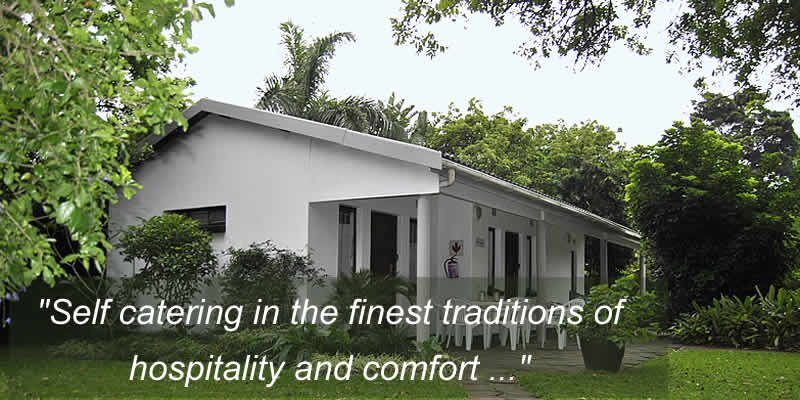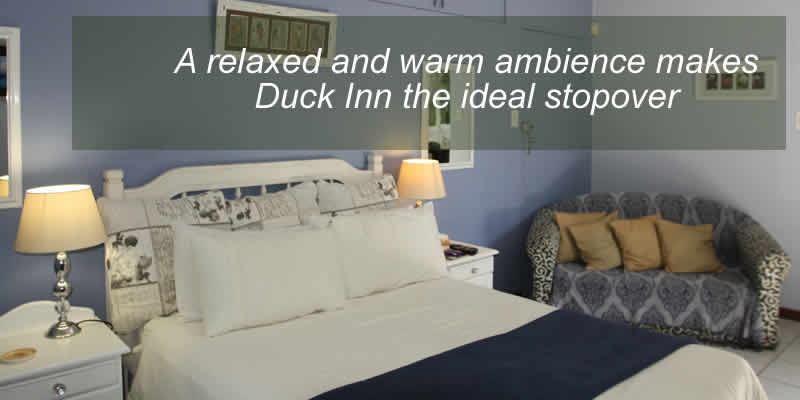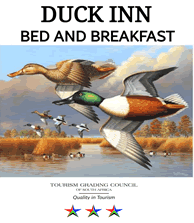 |
||||||||||||||
| WELCOME TO DUCK INN | ||||||||||||||
| ACCOMMODATION | ||||||||||||||
| FACILITIES | ||||||||||||||
| ATTRACTIONS | ||||||||||||||
| GALLERY | ||||||||||||||
| DIRECTIONS | ||||||||||||||
| CONTACT US | ||||||||||||||
| BOOK ONLINE | ||||||||||||||
|
Attractions |
Richards Bay Waterfront |

Situated on KwaZulu-Natal's fertile North coast, Richards Bay started out as a holiday town and has developed into a major port.
It is situated on a lagoon in the Mhathuze river and its potential as a great natural harbour were confirmed in 1897 after a detailed survey was carried out.
Originally, the lagoon provided a home for a vast population of aquatic birds, attracted to the area by a rich supply of fish.
Crocodiles, sharks and hippos frequented the lagoon, as did hunters and fisherman in search of trophies. |
 |
A monster crocodile (6.7m) was shot here. The area of sheltered water was twice that of Durban’s harbour.
When development started, conservationists objected and in 1935 the 1 200 hectare lagoon was declared a game reserve, whilst in 1945 the adjacent land was declared Richards Bay Park.
The town was named after Admiral Sir F.W. Richards, a commander of the British Naval Division during the Anglo-Zulu War.
|

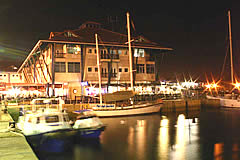
|

Richards Bay Lagoon
RICHARDS BAY LAGOON
Richards Bay in KwaZulu Natal is South Africa's premier bulk port and the most modern. Built in 1976 for the export of coal, it has since expanded into other bulk and breakbulk cargoes.
The Tuzi Gazi Coast is the marketing name for the Richards Bay area ranging from Mtunzini to St Lucia. The Tuzi Gazi waterfront has also a prime tourism destination of Richards Bay. The words Tuzi Gazi is derived from the Umhlatuze and Mzingazi rivers, which flow into the sea at Richards Bay.
A modern visitors desk can be found at the Mhultuze municipal offices in the CBD.
The Richards Bay lagoon is famous for being the site where the longest crocodile ever recorded in South Africa was shot by hunter John Dunn in 1891.
Another of the lagoon’s claim to fame is for being the starting point of Huberta the hippo’s trek. She made her way down the east coast in 1928, only to finish up on display in the Kaffrian Museum in King William’s Town. In 1935 work started to transform the lagoon into a harbour, much to the dismay of conservationists.
Therefore the Richards Bay Harbour was designed in an attempt to accommodate the needs of both industry and the natural environment. It was decided to divide the lagoon by means of a wall built across the bay. The waters to the north of the wall became the industrial harbour and the area to the south remained a sanctuary for waterfowl and wildlife.
A new estuary was cut through the dunes and coastal bush to allow lagoon floodwaters to flow directly into the sea. Numbers of wildlife and birds in the reserve are ever-increasing and the rare pink-backed pelican has been seen in the area. Flamingos, cormorants and various species of waders attract birdwatchers from far and near.
This area is also an important nursery ground for marine fish such as grunter, salmon, perch and yellowfin. It is a natural, living example of how both commerce and nature are able to exist side by side in harmony.
Birding in Richards Bay
The Zululand Birding Route is proud to be celebrating its 10th year anniversary from 23 – 25 March 2007. The celebrations are to be held at Richards Bay in conjunction with BirdLife South Africa’s 78th Annual General Meeting.
It soon became apparent, however, that of the 70 “birding spots” identified along the route there was a very real threat that many of them would not exist in 20 years time, and essentially the “product” would be undermined.
There was a need to add direct economic value to birds and their habitats to ensure their long term conservation.
|
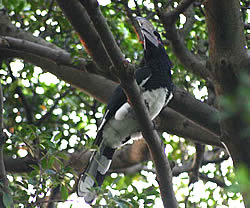
|
Birds are beautiful, inspirational and they are also excellent flagships species and vital environmental indicators. By focusing on birds and the sites and habitats on which they depend, BirdLife South Africa is working to improve the quality of life for birds, for other wildlife (biodiversity), and for people. The Zululand Birding Route (ZBR) was one of BirdLife South Africa’s first “Avitourism” products. It laid the foundation for Avitourism developments in South Africa, primarily by its successful ability to engage a wide network of stakeholders from local government to corporate levels. Because of avitourism’s ability to address social, economic and environmental issues it has become a very attractive model that appeals to a broad base of supporters.
Zululand has a spectacular 605 bird species and a wonderful range of destinations where they occur. It is a treasure trove of “specials” such as Green Barbet, Pel’s Fishing Owl, Pink-throated Twinspot, Neergard’s Sunbird and Palmnut Vulture. The ZBR promotes the area and ensures that these jewels of the region are accessible by birders. The ZBR has proved time and time again that tourism can have enormous conservation benefits as well as generating much needed income by local communities and other stakeholders. In this way, birding tourism adds real economic value to the wild birds and the habitats and provides tangible reasons to conserve natural habitats and the birds that occur in them. One of the aims of the ZBR is to create awareness about Important Bird Areas (IBA’s) and bring visitors to them. Some typical examples of these IBA’s include sites like Dlinza and Ongoye Forests, Muzi Pan and Richards Bay’s Southern Sanctuary.
The ZBR is helping create important career paths for black South Africans, by training them up as bird guides. They attend a month-long training course which is followed up by ongoing mentorship which sharpens and assesses their skills to ensure that they are accredited as birding guides. There are currently about 40 guides in the Zululand area, earning an income from their new found skill as bird guides.
BirdLife South Africa Travel works in conjunction with the Zululand Birding Route to formulate customized birding itineraries, incorporating the many facets of the route including the infrastructure such as bird hides and board walks, birder friendly accommodation and guides.








